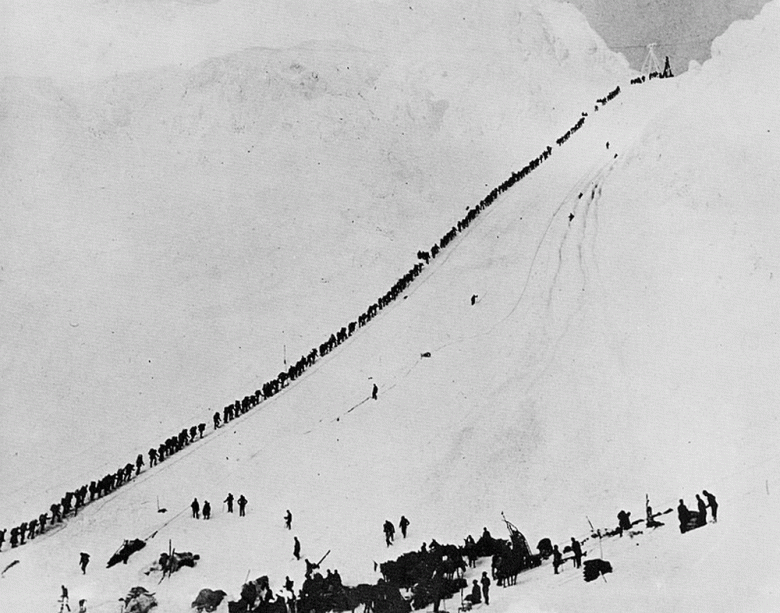The Santa Barbara Symphony invites audiences to rediscover comedy’s golden age as Charlie Chaplin’s groundbreaking 1925 film ‘The Gold Rush” (now celebrating its first 100 years) is projected on the big screen at the Granada Theatre.
While, under the baton of Grammy-winning guest conductor Lucas Richman, the symphony will accompany the screening with Chaplin’s original score, in a somewhat enhanced arrangement, matching the music to the action with an all-encompassing depth no recording can match.
The event is called Chaplin’s Masterpiece @ 100.
Chaplin’s film, set during the Klondike Gold Rush of the late 19th century, follows the adventures of Chaplin’s most famous character, The Little Tramp, as he ventures to Alaska in search of fortune, only to encounter a series of challenges and misadventures, among the latter, being so hungry he cooks and eats his shoe, taking shelter in a cabin — with a wanted murderer! — that is teetering on the brink of an abyss, and so on.
Chaplin originally intended to shoot much of the movie on location, and spent two weeks filming in the Sierra Nevada near Truckee, California.
The only footage he used from all of it was the opening scene of the prospectors hiking up over Chilkoot Pass, single file, in a long line that snakes up the snow-covered slopes towards us and right over us.
It’s an astonishing shot; I had thought that Greg Toland and Orson Welles invented deep focus for “Citizen Kane” in 1941, but this sure looks like deep focus.
Chaplin has taken a famous photograph from 1898, and reversed the point of view, so we are looking down from the Chilkoot summit, and even though the line of trudging men stretches back at least a mile or more, they are in focus all the way.
Near the top, a man wearing a bobsled as a pack falls aside and lies still, like a prisoner on a death march. Do all these men, we wonder, truly believe they are going to get rich?
Chaplin hired 643 extras for the shot. It is a grim scene to open what is, for the most part, a rough-and-tumble slapstick comedy, not a harsh exposé of mass delusions.
The rest of the movie was shot on sets, and looks it, but is nevertheless full of wonderful effects, none of them computer-generated.
The plot is as rambling and absurd as that of “Tom Jones,” yet it hangs together somehow, with a weird consistency. Chaplin makes it all work.
The symphony, which encourages patrons to dress in black and white in honor of Chaplin’s style and era, will be providing Chaplin-related props for fun photo opportunities to “dress the part” on the front steps and again front of its in the Granada lobby.
Patrons are also encouraged to post their pictures using the hashtag #ChaplinAtTheSymphony and #NotYourGrandfathersSymphony.
At 6:30 p.m. Saturday and 2 p.m. Sunday, UCSB Department of Film & Media Studies Professor Ross Melnick will lead a conversation, on stage at the Granada Theatre, about Chaplin’s artistic legacy, the enduring appeal of “The Gold Rush,” and the art of synchronizing live music with film.
Tickets for Chaplin’s Masterpiece @ 100 are $42-$192 and can be purchased at the Granada Box Office online at https://ticketing.granadasb.org/overview/19059; by phone, 805-899-2222; or in person at 1214 State St.
For more, visit www.TheSymphony.org or call 805-898-9386.
